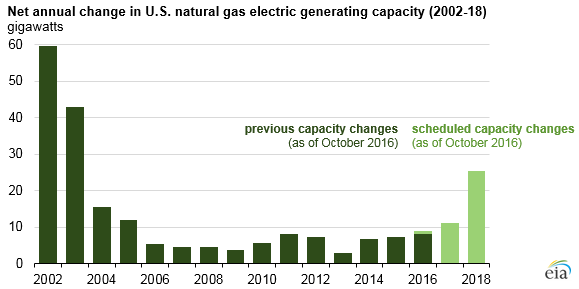Developer of 550-MW Gas Power Plant Commits to Voluntary GHG Emission Reductions
In a step that it hopes will be emulated by developers of new natural gas generation facilities in the U.S., NTE Energy has voluntarily committed to drastically slash greenhouse gas (GHG) emissions from the proposed 550-MW Killingly Energy Center facility in Connecticut—and to shut it down by 2050 unless it operates with no net GHG emissions.
The St. Augustine, Fla.–headquartered company said it will work to reduce and offset GHG emission levels from the proposed northern Connecticut plant to at least 80% below initial operating levels by 2050. “Beyond this, NTE has committed to retiring the facility in 2050 or otherwise operating the facility with no net greenhouse gas emissions,” it said.
NTE Energy CEO Seth Shortlidge Shortlidge told POWER on February 1 that the facility will achieve its GHG targets using a “combination of state-of-the-art electric generation technology, voluntary reductions in operations of the facility during the later years of the facility’s economic life, and the purchase [or] creation of GHG offsets.”
The measure will support compliance with Connecticut’s Global Warming Solutions Act of 2008, NTE Energy said. The project is in the process of obtaining permits, but the company anticipates that construction could commence in the second or third quarter of 2017 and begin commercial operations by 2020. NTE Energy expects investment in the plant could top $500 million.
Cheaper in the Long Run?
“We believe,” said Shortlidge, “that our decision to voluntarily reduce and offset our greenhouse gas emissions over the facility’s lifespan will have significant positive economic and environmental benefits and will not affect the final construction cost of the plant.”
Shortlidge added that as lower-cost renewables and energy storage technologies are installed over the longer term, the company projects that the natural gas plant will “naturally dispatch less in the later years of its life.
“While the facility will operate less, when it does operate it will be at times when it is crucial for electric grid stability and meeting the region’s electricity needs,” he explained. “These periods tend to provide greater revenues and will maintain the plant’s economic viability.”
The commitment serves as a “new paradigm of environmental stewardship for the energy industry, especially as the current state of uncertainty threatens the progress made in reducing GHG emissions,” the company said.
“Our decision here is greater than economics, or the current benefits of natural gas power generation,” said Shortlidge. “This is about being a leader and challenging other power generators to be even more accountable for today’s energy needs and tomorrow’s effects on global warming.”
Sparking a Movement
NTE Energy isn’t the first developer to voluntarily commit to GHG reductions for a proposed power plant. Footprint Power in February 2014 struck a deal with environmental groups to reduce GHG emissions for its 647-MW Salem Harbor combined cycle gas turbine power plant, which is slated to come online in June 2017. As POWER reported in June 2016, the $1 billion plant—the first built in Massachusetts in more than 13 years—has been delayed nearly a year later than planned, largely due to permitting hurdles and opposition.
The Energy Information Administration (EIA) on January 30 noted that U.S. gas-fired capacity could more than double over the next year, from the current 11.2 GW to 25.4 GW in 2018, based on information reported to the agency. The EIA cited low gas prices—which fell from an average $5/MMBtu in 2014 to $2.78/MMBtu for the first eight months in 2016—and expanded production from shale formations as reasons for the capacity jump.
“Many of the natural gas-fired power plants currently under construction are located in Mid-Atlantic states and Texas, where the nation’s major natural gas shale plays are located,” the agency said. “Expanding natural gas pipeline networks also help support the growth in natural gas-fired electric generating capacity.”
Source: U.S. Energy Information Administration, Electric Power Annual and Preliminary Monthly Electric Generator Inventory
—Sonal Patel, associate editor (@POWERmagazine, @sonalcpatel)
